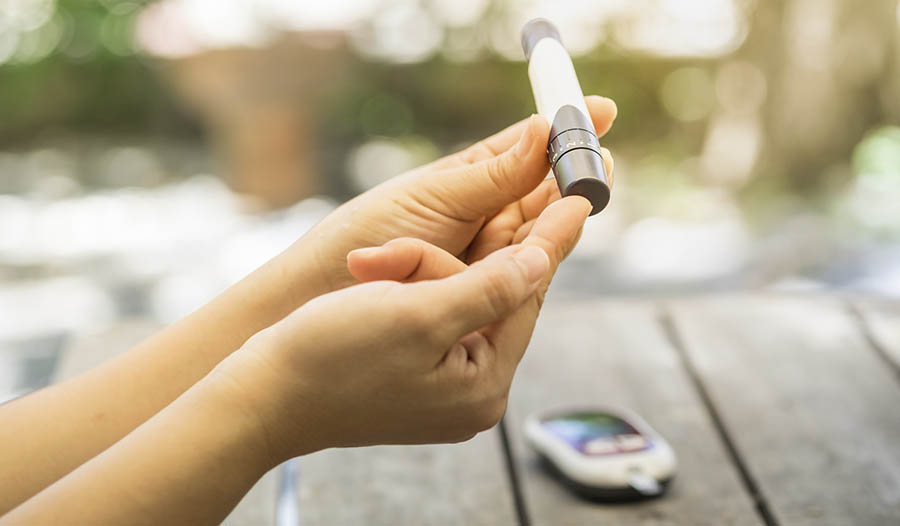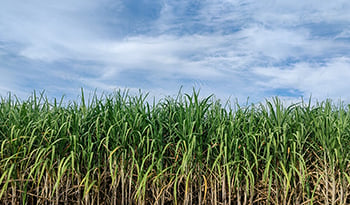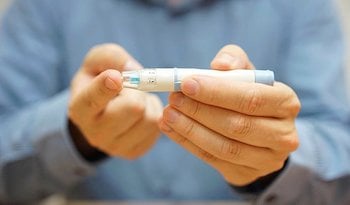Natural Health Hacks for Hypoglycemia Support
DISCLAIMER:This blog does not intend to provide diagnosis...

Hypoglycemia, or low blood sugar, is something we’ve all experienced at some point in our lives. However, if persistent, hypoglycemia can be a sign of more severe conditions, such as diabetes and even arthritis. So what exactly is hypoglycemia—and how do we tackle something that has existed for ages? I believe we should take an integrative approach to treat hypoglycemia by targeting imbalances in the body to help sustain blood sugar levels and maintain better overall health.
What Is Hypoglycemia?
Hypoglycemia is a condition that occurs when we experience low blood sugar or glucose levels in our body. Glucose is our body’s source of energy and nutrients, so having low glucose restricts our body from functioning optimally and can bring about many symptoms, including dizziness, syncopal episodes, brain fog and muscle weakness.
When we eat foods containing high glucose levels, such as sweets, breads, pastas and certain fruits, glucose is absorbed into the blood and distributed to various parts of the body, including the heart and brain for energy. Our pancreas responds to this sugar intake by secreting a hormone called insulin, which helps process and break down glucose throughout the body. Insulin also helps our cells absorb glucose while directing any excess to the liver for storage and metabolism.
Normally, when blood glucose levels are low, a hormone called glucagon signals the liver to release stored glucose and maintain stable blood sugar levels. But, when any step in this process is stopped or impaired, blood sugar levels are not balanced and hypoglycemic symptoms develop.
Hypoglycemia is typically split into two types: reactive and non-reactive.
- Reactive hypoglycemic symptoms are usually caused by an overproduction of insulin, which could be the result of consuming foods or beverages high in sugar and refined carbohydrates. This forces your body to run in overdrive to produce insulin and break down all of that sugar. These symptoms can happen within a few hours of eating a meal.
- Non-reactive hypoglycemia does not have to coincide with a meal. Instead, it is influenced by factors such as family history and other illnesses your body could be fighting. If you have any disorder affecting your liver, kidneys or even the heart, your body might not be processing glucose correctly, thus creating hypoglycemia in the process.
Hypoglycemia Signs and Symptoms
As the causes of hypoglycemia are varied and depend on the individual, so do the symptoms. One thing most hypoglycemic patients do have in common, however, is that at some point in their life, they have experienced low blood sugar symptoms. The most common symptoms are:
- Hunger: Does your stomach grumble throughout the day? Usually, this is a sign that your blood sugar is low and your body intensely wants food.
- Brain fog: If you are easily losing concentration at work, hypoglycemia could be the cause. Patients who experience brain fog describe being confused and feeling mentally slow and foggy.
- Fatigue: This one is huge! Being tired, groggy, having trouble falling asleep and even having body aches towards the end of the day could mean you have low blood sugar.
- Mood swings: If you continue experiencing highs and lows in your mood throughout the day, or even have headaches because of the swings, this points to an imbalance in blood sugar levels.
- Dizzy spells or light-headedness: Do you ever feel dizzy when you walk around school or work? What about episodes of fainting? Having low blood sugar can cause these symptoms.
- Anxiety: Are you really nervous throughout the day? We all have stressors in our life, but if you continue to feel anxious and shaky all day, your blood sugar might be lacking. Experiencing hypoglycemia could also be caused by skipping meals, causing your blood sugar to fluctuate over the course of the day. Consuming lots of alcohol, though counterintuitive, can lower blood sugar over time too. Alcohol temporarily can give you a sugar rush, but after a few hours, your body’s sugar levels plummet.
Who Is at Risk for Hypoglycemia?
Technically, anyone is at risk for hypoglycemia. Both children and adults can acquire hypoglycemic symptoms at any age, especially if their diet is high in sugar and carbohydrates. Also, keep in mind that hypoglycemia, like diabetes, can run in families, so you could be predisposed to insulin resistance as well as low blood sugar.
Conventional Treatments for Hypoglycemia
The American Diabetes Association recommends taking 15-20 grams of carbohydrates (for glucose) and then monitoring your blood sugar for 15 minutes to detect a rapid increase in blood sugar. If low blood sugar persists, repeat this regimen until blood sugar is stable. Once your blood sugar levels are normal, it is recommended that you eat a snack or meal so that your body has nutrients and your stomach is not empty.
Integrative Approach to Hypoglycemia
While current treatment methods are focused on curing or treating hypoglycemia, the integrative approach is more focused on prevention. There are a few things you can do to keep your body healthy to avoid or reduce hypoglycemic effects:
1. Make sure you eat foods high in protein and fiber and low in sugar.
- Incorporate lean protein into every dish—fish, eggs, tofu, tempeh; whatever meat or vegetarian alternative you want to include in your diet will be beneficial. Replace cooking in butter and margarine with coconut, olive or avocado oil to add healthy fats to your body, which hold blood sugar stable for longer.
- Try eating smaller, but more frequent, meals and snacks throughout the day. I recommend nuts or a trail mix (minus the M&Ms) as a snack at work or school because it’s protein-heavy, but also filling.
- Reduce the amount of sugary drinks and sweets you consume, as this will increase your insulin resistance.
2. Eat good carbs.
- Not all carbs are bad! Good carbohydrates to include in your diet are brown rice, legumes, sweet potatoes and beans. Replace refined carbohydrates, like ice cream or cookies, with these alternatives to keep your blood sugar steady throughout the day.
- Keep your body fueled with good carbohydrates so that when you go for a walk or exercise at the gym your body has stored glucose and you don’t feel dizzy or lightheaded.
- Avoid fast and fried foods, high-sugar beverages, sugary alcohols and processed foods, as all of these can increase your glucose levels.
3. Supplement your body naturally.
There are also a few supplements that can help boost your blood sugar and keep your insulin level stable. Here are my go-tos:
- Chromium: This trace element works with insulin to help reduce insulin resistance and process glucose effectively. It is known to have anti-inflammatory and anti-hypoglycemic effects on the body. Anything like chromium picolinate or GTF chromium will give you the dose of chromium you need to maintain blood sugar. This, however, should be taken on a full stomach.
- Spirulina: Spirulina supplements are great for reducing sugar cravings and helping balance fluctuating blood sugar levels. Either tablet or powder form are effective against low blood sugar, but I like adding spirulina to my morning smoothie with bananas, strawberries, protein powder and coconut oil—then my blood sugar is set from the beginning of the day.
- Whey protein: Whey protein supplies essential amino acids to the body such as glutamine, which helps stabilize the storage of sugar in your body. This can help prevent the lows and highs of blood sugar. If you cannot tolerate whey protein, then try rice protein or hemp protein instead.
- Omega 3s: Healthy fats like omega-3s help your body store nutrients much more efficiently, so you don’t experience low and high blood sugar waves. Omega-3 fatty acids, such as fish oil, also reduce any inflammation that may have occurred due to hypoglycemia and low blood sugar.
- Dandelion root: This is excellent for maintaining blood sugar levels and supporting the pancreas. Try dandelion tea a few times through the day or blending it in your favorite smoothies.
- Milk thistle: This is also helpful to support the liver and pancreas and maintain a healthy blood glucose level. A standard dose of 200 mg is recommended.
References:
- http://www.diabetes.org/living-with-diabetes/treatment-and-care/blood-glucose-control/hypoglycemia-low-blood.html
- https://www.healthline.com/health/hypoglycemia-without-diabetes#diagnosis
- https://draxe.com/hypoglycemia-symptoms/
- http://www.nationalnutrition.ca/HEALTHCONCERNS_HYPGLYCEMIA.aspx
- https://www.ncbi.nlm.nih.gov/pmc/articles/PMC4310066/
- https://www.chrysalisnaturalmedicine.com/hypoglycemia/

 By Dr. Taz Bhatia, M.D.
By Dr. Taz Bhatia, M.D.


